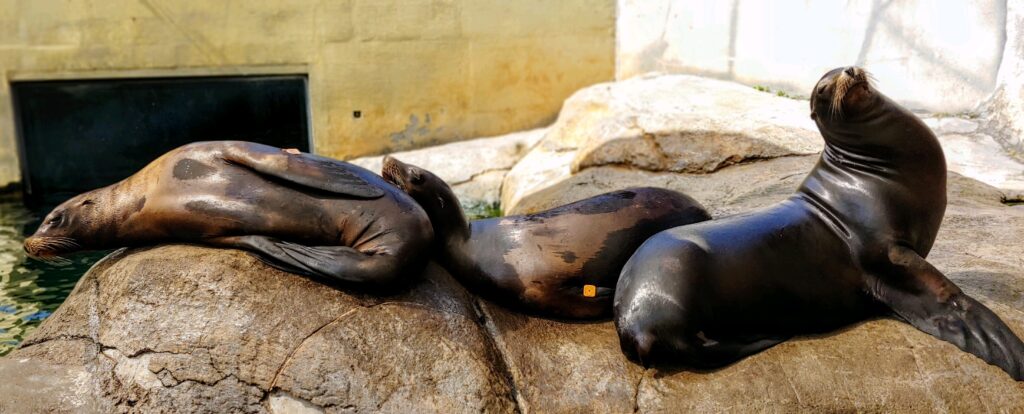June 11, 2021
In 2015, there was a mass stranding of California Sea Lions due to the rise in temperature in the ocean. The fish sought out the cooler water, and the female sea lions that gave birth that year left their pups to hide on the rocky shores for days leaving the pups hungry for their mother’s milk.The pups began swimming while weak with hunger. They would eat anything they could find in the ocean and at this time it wasn’t fish. Thousands of sea lions were being washed up on shore in record numbers. Sea lions get the water they need to live by the fish they eat, not by drinking. Not consuming fish left them dehydrated as well as emaciated. The older animals began consuming trash such as straws, plastic bags, zip ties, fishing line, cigarette butts and balloons just to name a few.
I know this not only from watching the news, but also because I went to the Marine Mammal Care Center in California to volunteer during this catastrophic event. I assisted the staff and other volunteers in removing trash from these very ill animals. There was a fishing net wrapped around one sea lion’s neck cutting into her skin. Pups were brought in by the dozen in vans. We would weigh them, give them fluids, enemas and open their mouths to remove the trash. We took their temperatures and gave them various medications by injection. We made a fish gruel and tube fed the weak.
Some animals were at the center for a week or two recovering when I arrived. For these animals we would prepare and feed them frozen fish. We did not linger, just feed them and leave so humans were not associated with food, therefore the sea lions would not approach humans when released.You may be wondering why humans are potentially dangerous to sea lions besides the trash we produce. Fishermen and sea lions have been competing for fish for as long as humans have been fishing. In fact, one of the California sea lions in our care at the Zoo today, Lily, was rescued at the San Pedro Marine Mammal Care Center in 2010 where the veterinarian staff removed a bullet from Lily’s right flipper. Someone shot her when she was just a small pup. Thankfully, she survived and was brought to our zoo. She is eleven years old now. I have known her since she arrived and can tell you she is intelligent, gentle, healthy and the mother of her only offspring, Bob.
If you find yourself in California and love the ocean and sea lions I encourage you to volunteer at any of the rescue centers in California. If you don’t have the time, donations are always welcome. Many of these centers run solely on donations, hard work and big hearts. I met some wonderful people there and learned how important our oceans are to all of us.
– Mary Ellen Ostrander, ZoologistDonate to Ocean Conservation








